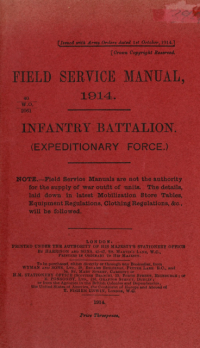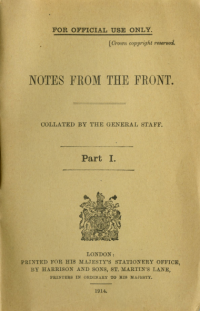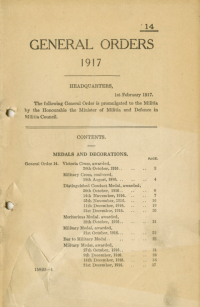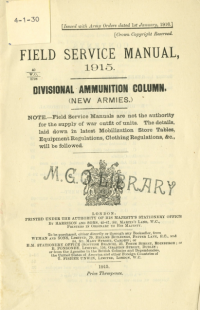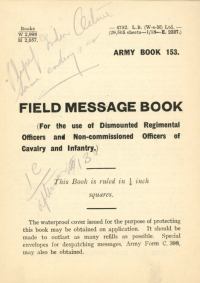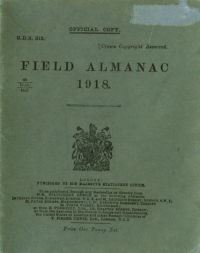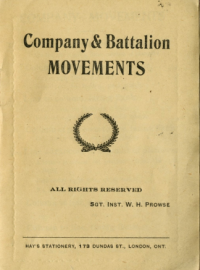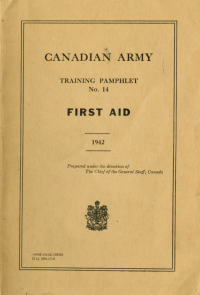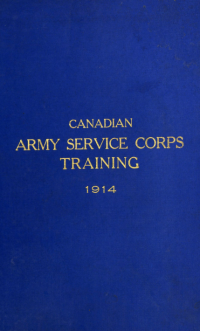Fighting
Field Service Manual 1914
This field service manual was published in 1914 for use by the Allied expeditionary forces. This manual focused primarily on transportation, for the soldiers themselves, but also for animals and carts/wagons. Information in field manuals such as this one are organized into sections and charts to ensure standardization and efficiency.
Notes from the Front
These booklets were intended to act as a guide for Allied soldiers on the front lines. They include instructions and information about enemy armies in order to better equip the troops for battle.
General Orders 1917
The General Orders pamphlets were issued by the Minister of Militia and Defence in Militia Council, to be referenced by members of the Canadian Militia. The purpose of these pamphlets is to inform soldiers of essential instructions, procedures, and regulations.
General Orders 1916
The General Orders pamphlets were issued by the Minister of Militia and Defence in Militia Council, to be referenced by members of the Canadian Militia. The purpose of these pamphlets is to inform soldiers of essential instructions, procedures, and regulations.
Field Service Manual 1915
Field service manuals are a useful resource for soldiers since it organizes a great deal of information into a single, pocket-sized pamphlet. This manual in particular is concerned with the division and distribution of personnel, horses, ammunition, and field kits, as well as the transportation of these supplies,
Field Message Book
Field message books are a type of notepad used by military officers while in the field so they can communicate within and between units. This book contains quite a few rules for the messages to ensure standardization and full comprehension from both the sender and recipient.
Field Almanac 1918
This almanac was compiled for the use of Canadian soldiers during the First World War. Handbooks such as this one were a very helpful tool for new recruits because they included information about the countries involved in the war, conversion tables, Morse Code, and essential first aid instructions.
Company & Battalion Movements
This manual lists the various company and battalion movements, as well as instructions for how to execute them.
First Aid Pamphlet
In 1942, the Canadian Army issued this pamphlet which acted as a guide for first aid instructors who were training new recruits. Teaching soldiers about things like wounds, treatment methods, and contamination was very important since medical attention wasn't always readily available on the front lines. The concept of improvisation is also highly stressed since proper tools and materials could be scarce on the battlefield.
Canadian Army Service Corps Training 1914
The Canadian Army Service Corps (C.A.S.C.) issued this training manual in 1914 as a source for newly recruited soldiers to refer to. It includes important practical information like drills, formations, and commands, as well as instructions for treating wounds and caring for horses.

